Introduction
In modern medical environments efficient and accurate diagnostic tools are crucial to ensure timely and effective patient care. Yet many radiology departments still rely on outdated technology, including low-resolution monitors and clunky navigation systems. These legacy systems can hinder workflow efficiency, increase the potential for diagnostic errors, and compromise the overall patient experience. With the increasing complexity of medical imaging, there's a growing need for more intuitive, high-performance technology.
This case study highlights the application of ALOGIC’s Clarity Max Touch monitors in radiology departments, illustrating how its advanced touchscreen features contribute to enhancing diagnostic workflows, improving user experience, and supporting accurate image interpretation.
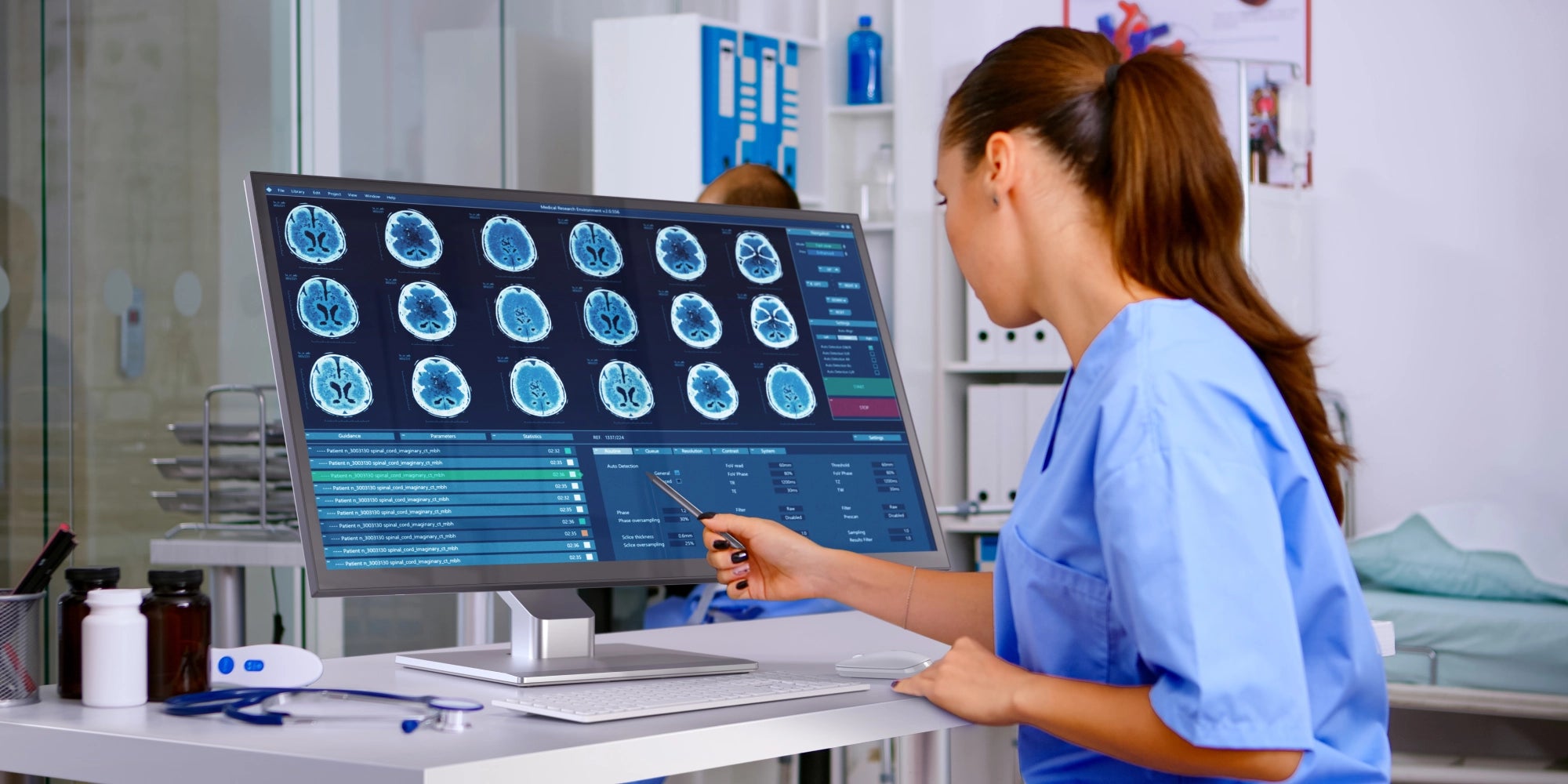
High-Resolution Imaging for Precision Diagnosis
Radiology professionals rely heavily on high-resolution monitors to interpret critical medical imaging data. Clarity Max Touch monitors support 4K ultra-high-definition resolutions, which are essential to view detailed images such as X-rays, MRIs, and CT scans. This level of image clarity ensures that subtle details, such as fractures, lesions, or tissue abnormalities, are not overlooked during interpretation.

Intuitive Multi-Touch Interaction for Efficient Image Review
Clarity Max Touch monitors enable radiologists to interact directly with imaging software using touch gestures such as pinch-to-zoom, swipe, and drag. These intuitive controls significantly reduce the cognitive load associated with traditional navigation methods, which often require multiple button presses or keyboard shortcuts.
With a touchscreen interface, radiologists can quickly zoom in to examine a specific area of an image, pan across large scans, or adjust settings like brightness and contrast with simple finger movements they’re used to from other devices, such as phones, tablets or laptop trackpads.
This intuitive method of interacting with medical images enhances the diagnostic process, enabling radiologists to focus more on interpreting images rather than managing complex software interfaces. In addition to reducing training time for new staff, it also reduces the time spent adjusting settings, improving overall workflow efficiency and minimizing the risk of operator error.

Enhancing Collaboration and Patient Communication
Radiology is a collaborative discipline, working alongside other medical professionals such as surgeons, oncologists and primary care doctors, to discuss treatment options based on imaging findings.
ALOGIC’s Clarity Max Touch monitors promote this collaborative environment by allowing multiple users to interact with the display simultaneously. The 10-point multitouch feature allows two or more users to manipulate and annotate the same image at the same time, making it easier to share insights or review cases together, without requiring significant familiarity with the software’s interface.
Moreover, radiologists can also use the touchscreen monitor to annotate and explain imaging results directly to patients in an understandable way. By zooming in on specific areas of a scan, the radiologist can visually point out problem areas to the patient, providing a clearer understanding of their condition and treatment options.
This level of interactivity improves communication between health professionals and patients, fostering a more transparent and patient-centric approach to care.
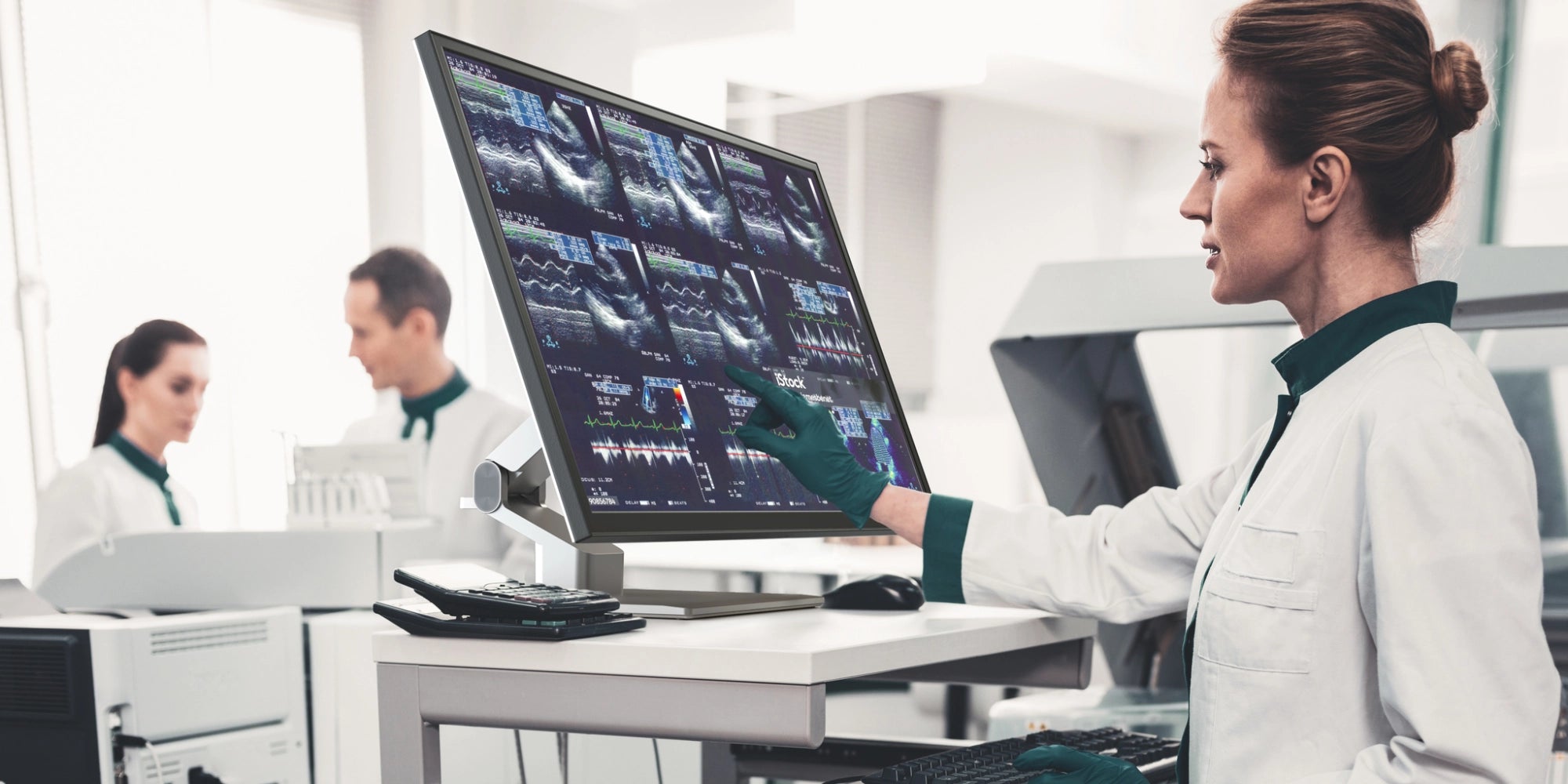
Ergonomics for Extended Use
Radiology departments often require long hours of screen time for imaging review, which can strain the user’s posture and comfort, often contributing to long term health issues such as repetitive strain injuries (RSI). Clarity Max Touch monitors are designed with ergonomics in mind, featuring a fully adjustable stand that allows the monitor to tilt, rotate, and adjust in height.
This flexibility ensures that radiologists can position the monitor at the optimal viewing angle, reducing physical strain and promoting better posture during long diagnostic sessions.
The optional Clarity Fold Stand accessory further enhances the user experience by allowing easy rotation of the display, which is particularly useful when multiple professionals need to view the screen at the same time.
Radiologists can adjust the angle of the monitor to ensure comfortable viewing for all team members, whether they are standing or sitting, making it easier to share and collaborate on patient cases without unnecessary neck or eye strain.
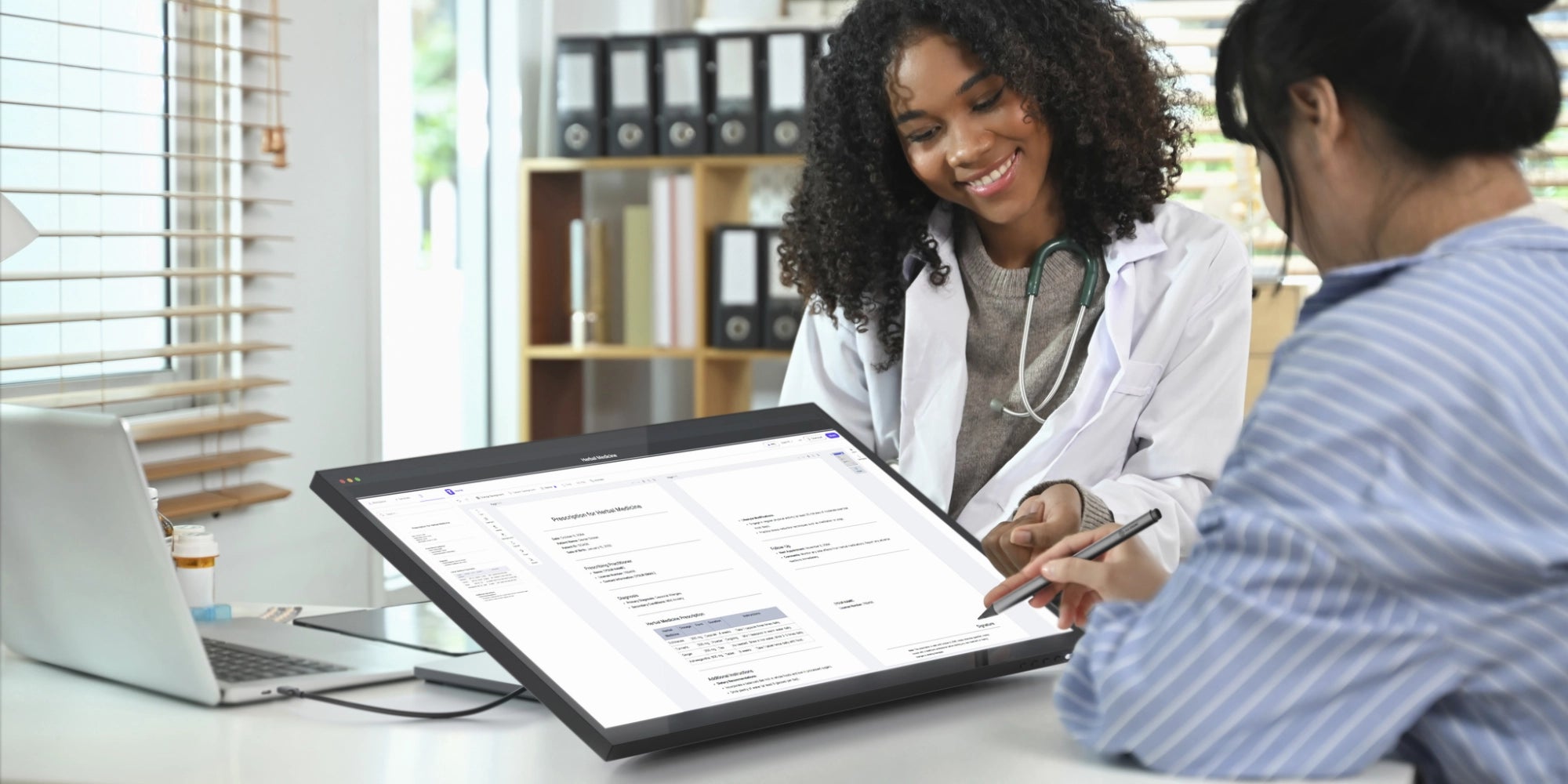
Paperless Workflows with Digital Signatures
Radiology departments are increasingly adopting paperless workflows to improve efficiency and streamline administrative tasks. Clarity Touch monitors support active styluses, which can be used to capture digital signatures for patient consent forms, medical reports and other documentation directly on the touchscreen.
This feature eliminates the need for physical paperwork, reducing administrative overhead, helping the organisation achieve its waste reduction goal and most importantly enhancing workflow efficiency.
For example, before a radiology procedure or consultation, the patient can use the stylus to sign off on digital reports or consent forms in real time. This not only saves time but can also integrate seamlessly with electronic health record (EHR) systems, ensuring that all documentation is securely stored and easily accessible for future reference.
Additionally, the monitor captures the time and date of the signature, creating a verifiable audit trail for compliance purposes.

Conclusion
ALOGIC’s Clarity Max Touch monitor represents a significant leap forward in the integration of modern touchscreen technology in radiology. With its high-resolution 4K display, intuitive multi-touch interface, ergonomic design and paperless functionalities, it is transforming the way radiologists interact with imaging data, collaborate with other medical professionals and communicate with patients.
By improving workflow efficiency, enhancing diagnostic accuracy, and fostering better patient and team interactions, Clarity Max Touch monitors can help radiology departments modernise and streamline their processes, ultimately contributing to more timely, accurate and cost-effective patient-centred care.
As healthcare continues to evolve, this type of advanced technology will play a crucial role in advancing diagnostic imaging and supporting the future of radiology.
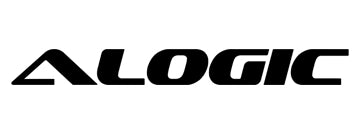
 USA
USA
 Canada
Canada Australia
Australia UK
UK Europe
Europe New Zealand
New Zealand Japan
Japan Singapore
Singapore UAE
UAE India
India
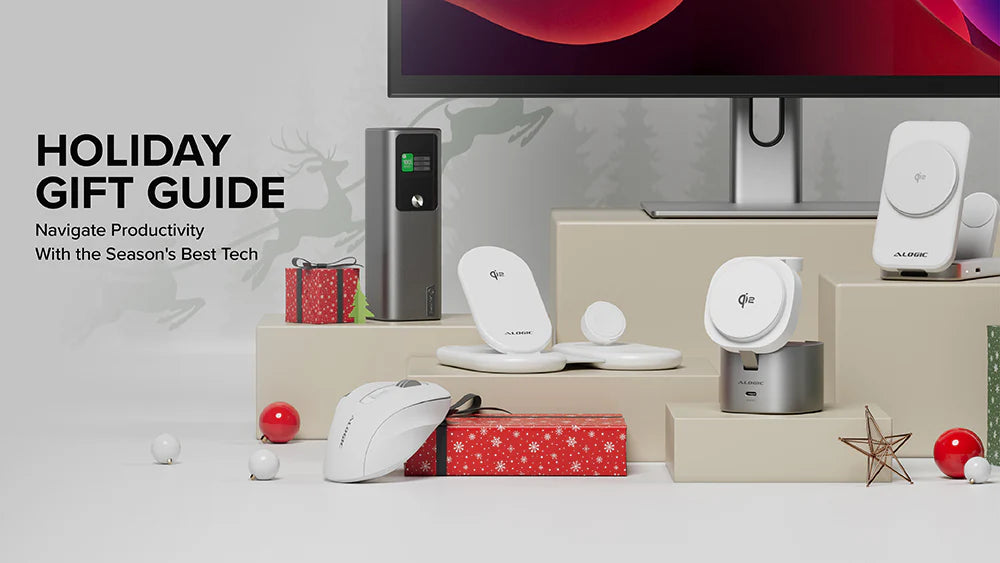
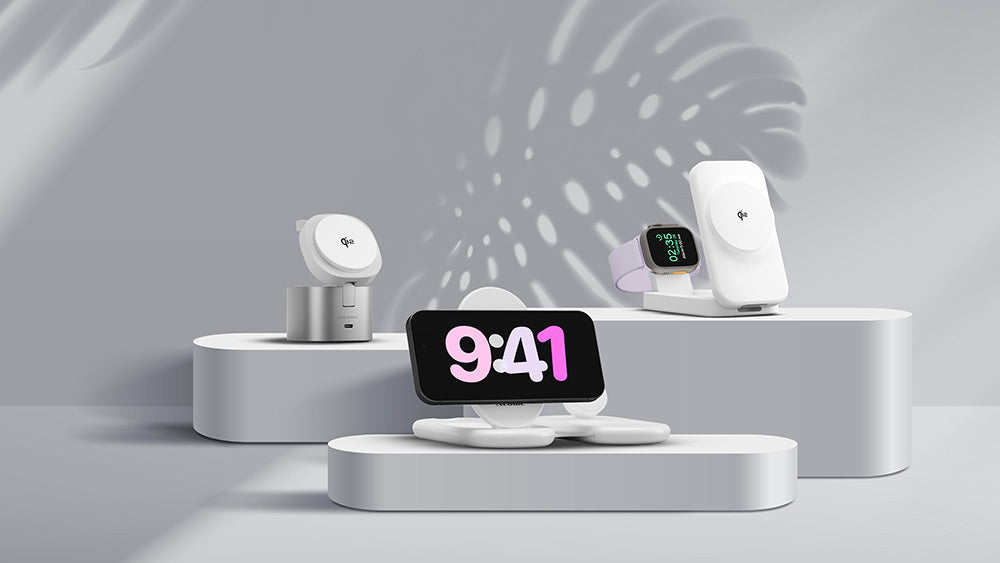
Leave a comment
This site is protected by hCaptcha and the hCaptcha Privacy Policy and Terms of Service apply.